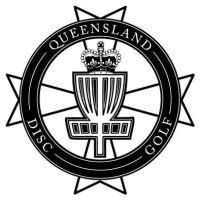ENFORCEMENT
Some extracts from rule 801.02 Enforcement: (https://www.pdga.com/rules/official-rules-disc-golf)
B. Players are expected to call a violation when one has clearly occurred. A call must be made promptly to be enforceable (except for misplays).
C. A player in the group may call or confirm a rules violation on any player in the group by notifying all players in the group.
D. A warning is the initial advisement a player is given for violating certain rules; subsequent violations of the rule incur penalty throws. A call for a rules violation that results in a warning does not need to be confirmed to be enforced. Warnings do not carry over from one round to the next, nor to a playoff.
So, it is not only the player’s responsibility to KNOW the rules, but also to ENFORCE them by calling violations. This might sound harsh, but it is absolutely FAIR (see 801.01). Why should your opponent be handed an advantage by flouting the rules? He/she should know them. Also, you have no reason to complain if you are called for a valid violation.
Q1:
If the player who is next to throw is absent, can the other players go ahead and throw? Does that give the absent player more time to show up?
A1:
No. The player who is next after the absent player can throw after having waited 30 seconds. If the missing player hasn’t shown up by then, they get par plus four for the hole (essentially, that player is late for that hole, similar to being late for their starting hole).
You will have noticed that there’s more competition for spaces at events, and that the courses are regularly near full. As a consequence, it becomes important to ensure that the need for SPEED OF PLAY is recognised. Be mindful that if a group is slow or takes too much time looking for lost discs, etc, then the whole field is compromised and slowed down.
A few pointers:
- Spend no more than 3 minutes looking for a lost disc (805.03)
- Spend no more than 30 seconds to take your throw (802.03)
- Be ready to tee off at the start of the event (811.F.5)
- It is ok to play out of turn to speed up play, with consent of the player who is next (802.2.E)
Q2:
My throwing hand bumped a tree branch during my backswing, knocking the disc to the ground, and the disc rolled forward of my lie. Was that a throw?
A2:
No. A throw begins when the disc is moving forward in the intended direction. A disc dropped or knocked out before or during a backswing does not count as a throw.
Q3:
I threw my drive off a raised concrete tee pad. When I let go, the front of my foot was hanging off the front edge of the pad. Was that a stance violation?
A3:
No. The rule states that all supporting points must be within the teeing area at the time of release. “Supporting point” refers to any point on the player that is in contact with the playing surface (in this case the tee pad), rather than to a complete body part such as a foot. The part of the foot that is hanging off the end is not a supporting point because it is not in contact with the playing surface, so no violation has occurred.
Oh, if you haven’t read the rules, now is your chance: https://www.pdga.com/rules/official-rules-disc-golf
